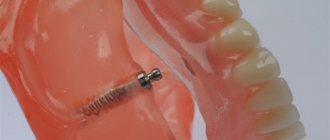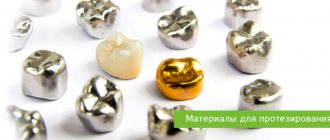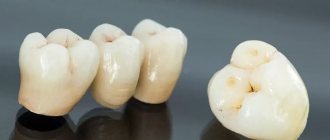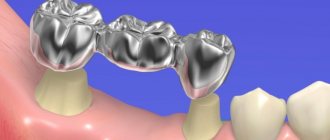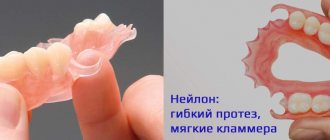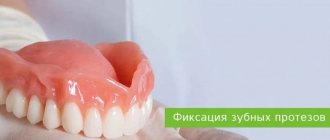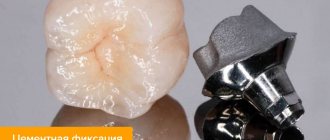In modern dentistry, many different methods are used to restore the dentition in case of partial or complete loss of its units. The choice of technology depends, in particular, on the timing of dental prosthetics. The difference in the duration of treatment can be up to several months, depending on how soon and how high-quality the patient wants to get.
Timing of prosthetics on implants
If the patient chose implantation to restore teeth, the final stage may occur in six months or longer. This is due to the fact that before the installation of prostheses you have to undergo several procedures and operations. In particular, when using the classical technique, before obtaining the final result it is necessary:
- insert artificial roots into the jaw - implants;
- wait until the rods are overgrown with bone tissue and stabilized;
- undergo the second surgical stage of implantation to install the former;
- after two weeks, install the abutment and take impressions to make the crown;
- do a fitting and, if necessary, correction of the prosthesis.
After all these manipulations, the time comes to install a permanent artificial tooth. The general time frame for prosthetics, including implantation, in this case can range from four to seven months.
Types of dentures
Now let's talk about what types of dentures there are. Currently, in dentistry there are various designs for replacing one or more teeth, as well as for total prosthetics of an entire dentition. Based on the method of fastening dentures in the oral cavity, they are divided into the following categories.
Removable
The design of removable dentures consists of a base - a base and artificial crowns located on it. Such structures can be complete - to replace all the teeth of one jaw - or partial. As for the types of removable dentures, according to their structure they are classified into plate ones, which are attached to the palate by suction, and clasp structures with locks-attachments or clasps for fixation on the supporting teeth. They are easy to use, and usually patients do not have questions about how to install the structure themselves, or how to remove the denture for hygiene procedures or at night. Unlike other types of orthotics, repairing removable dentures in most cases helps extend the life of the dentures. Removable structures are of the following types:
- Nylon
- Acrylic
- Acrylic-free
Conditionally removable dentures
This type includes complete plate dentures for replacing all teeth supported on implants. This is the best option for those who value high quality but want to save money on prosthetics. In this case, both the upper denture and the lower denture are attached to artificial roots with special cement, and only a dentist can remove them if necessary. The main indication for the use of conditionally removable dentures is the inability to install a large number of artificial roots due to inadequate quality of bone tissue or due to lack of funds. Reviews of these types of dentures indicate that they represent excellent value for money.
Fixed
With the help of this type of orthopedic structures, damaged teeth (enamel, cracks, chips and other defects) are restored. They are also used in orthopedic treatment for the loss of one or more teeth. Only a doctor can correctly remove a denture from the non-removable category. And their service life, as a rule, depends on how responsibly the patient will take care of him, and on the types of dentures used.
- Tabs.
These are microprostheses made of composite materials, ceramics or zirconium oxide, which are manufactured in dental laboratories and are used instead of fillings if the tooth is destroyed by more than 1/3. High-quality dental inlays fit tightly to the tooth and protect it from further destruction.
- Veneers.
Thin onlays for correcting the color, shape and eliminating various defects of the front teeth. They are produced directly and indirectly. The direct method involves the formation of veneers from a composite material directly on the patient’s ground teeth, and the indirect method involves the creation of ceramic or zirconium oxide plates based on dental casts in dental laboratories. Orthopedic veneers are considered a new generation of dentures.
- Dental crowns.
These structures are caps made of biocompatible materials that are placed on the ground teeth and fixed with dental cement. Crowns are used when more than 2/3 of a tooth is destroyed. In addition, a dental crown can be used to restore a completely missing tooth by securing it to an installed implant.
- Bridge prosthesis.
These are permanent orthopedic structures consisting of two crowns and artificial teeth between them. The installation of bridge-type dentures is carried out using grinded teeth or implants implanted into the jawbone. In this case, a proper dental bridge should serve to replace no more than two missing teeth in a row.
- Implant.
An artificial tooth root that is implanted into the jaw bone and serves as a support for a separate crown, bridge, or full denture when replacing the entire dentition. The orthopedic structure is attached to the implant using an abutment retainer or dental cement. Implants usually come with a lifetime warranty and are permanent dentures and do not need to be replaced.
Prosthetics in complex cases
The duration of treatment, or rather the timing of prosthetics, may increase even more if additional surgical procedures are necessary. For example, to install a crown or bridge on implants, bone tissue augmentation may be necessary, since its volume is not enough for the full “implantation” of a titanium root. In some clinical situations, it is also necessary to perform gum grafting, which requires additional time.
It is sometimes possible to install a prosthesis in such difficult conditions only after a year. This is due to the fact that you first have to wait until the bone material takes root. Then install the implant and allocate time for osseointegration (overgrowth of the rod with bone tissue). And only then will the production of the prosthetic structure begin. It is impossible to speed up treatment in such situations due to certain biological “laws” that no dentist can change. The fusion of bone tissue particles requires a certain time and this must be accepted and taken into account.
Maintenance of installed structures
Patients should remember that caring for artificial teeth is no different from caring for natural teeth. It is very important to brush your teeth daily with toothpaste and a brush, and remove food debris after each meal. With removable dentures, this is a mandatory condition, since food debris between the artificial structures and the gums can cause inflammation.
Read more about caring for installed dentures in the material “How to properly care for removable and fixed dentures so that they last as long as possible.”
In addition, you should not eat too hard foods - nuts, seeds, crackers. Artificial teeth can easily break from excessive pressure.
Time frames for manufacturing and installation of prostheses based on natural teeth
The choice of simpler prosthetic methods is usually explained by the desire to reduce the cost of treatment, as well as install crowns or bridges as quickly as possible. In this case, new teeth can be obtained in just a few days or a couple of weeks. This is exactly what is required to:
- treat, depulpate and prepare supporting units;
- take impressions, on the basis of which a crown or bridge will be made in the laboratory;
- try on and adjust the new design;
- install the prosthesis on the stump of the abutment tooth.
Modern progressive methods make it possible to restore a damaged tooth in one day. We are talking about using computer technology to design and manufacture a prosthesis in just a few hours, right in the dentist’s office. Such a crown is machined with high precision in a special milling machine, after which it undergoes finishing processing and is installed on the abutment tooth.
Creation and installation of various prostheses: what are the stages and how long will it take?
Article navigation
- Stages of prosthetics
- - reorganization
- — photometry
- - casts
- - choice of prosthesis model
- — design and planning
- — creation of a prosthesis
- - first fitting
- — fixation of the structure
- - education
- How long does it take for production?
- Manufacturing time for fixed dentures
- Production time for removable devices
- Care
- QUESTIONS
Question for a specialist
Modern dental prosthetics are affordable and multivariate solutions for restoring the aesthetics of a smile and the function of chewing. In preparation for restoration, the patient goes through several preparatory stages, which include choosing a doctor and clinic, selecting a prosthetic technique and preliminary treatment - they can take from a couple of days to several months. Detailed materials about this can be found on our website. The creation and installation of structures also consist of various procedures. What stages are involved in direct dental prosthetics, and in what time frames the structures are made, we will describe in detail in this article.
Terms of removable prosthetics
The manufacture of removable structures also requires some time. First, the dentist takes impressions of the jaws and sends them to the laboratory. Then it takes two to three days to make the models, after which the first fitting is carried out. About three to five more working days are required to produce the future prosthesis. After trying it on and fitting it takes about a week. The patient then tries on the design again and, if necessary, adjustments are made again. Thus, the production of removable orthopedic structures takes an average of three weeks.
Taking impressions and casts of jaws
In order for a technician to make a denture, he needs an accurate model of the patient’s jaw. Copying of jaws and teeth is done by taking impressions.
During the first visit, the doctor introduces an impression mass into the patient’s mouth on a special spoon. The patient closes his jaws and waits 2-3 minutes for the impression mass to harden. Then the patient opens his jaws and the doctor takes out an exact imprint of the patient’s jaw and teeth.
For patients, the first visit is absolutely not tiring and usually takes about 30 minutes.
The beauty of your smile is in our hands
This Personal Data Privacy Policy (hereinafter referred to as the Privacy Policy) applies to all information that the site located on the Internet at the address (on the domain name): https://www.clinicperfect.ru/ (hereinafter referred to as the Site) can receive about the User during the latter’s use of the Site and its services. 1. Terms and definitions used in the Privacy Policy
In the Privacy Policy, unless otherwise expressly stated in the text, the following words and expressions have the following meanings:
1.1. A website is a set of computer software and hardware that ensures the publication for public viewing of information and data, united for a common purpose, through technical means used for communication between computers on the Internet, operating through an Internet resource and related services. The Site in this Agreement means the Site on which a unified system for registration and authorization of users is located, located on the Internet at the address (domain name): https://www.clinicperfect.ru/
1.2. Site Administrator - persons authorized by the owner of the Site to manage the Site, acting on behalf of Digital Dentistry Clinic "Perfect" LLC
The owner of the Site is the limited liability company Digital Dentistry Clinic “Perfect” LLC Address: 214019 Smolensk region, Smolensk Tramway proezd, 4, office No. 14
1.3. User - a person using the Internet and, in particular, the Site, who has completed the registration procedure on the Site in order to access online ordering of services presented on the Site and has his own personal page (profile/account), as well as a person using the Site without completing the registration procedure for informational and similar purposes.
1.4. Personal data - any information relating to a directly or indirectly identified or identifiable individual (subject of personal data).
1.5. Processing of personal data - any action (operation) or set of actions (operations) performed using automation tools or without the use of such tools with personal data, including collection, recording, systematization, accumulation, storage, clarification (updating, changing), extraction, use, transfer (distribution, provision, access), depersonalization, blocking, deletion, destruction of personal data.
1.6. Confidentiality of personal data is a requirement for the Site Owner and (or) Site Administrator or other person who has access to personal data to comply with the requirement not to allow their distribution without the consent of the subject of personal data or the presence of another legal basis.
1.7. Cookies are a small piece of data sent by a web server and stored on the User’s computer, which a web client or web browser sends to the web server every time in an HTTP request when trying to open a page of the corresponding site.
1.8. IP address is a unique network address of a node in a computer network built using the IP protocol.
2. GENERAL PROVISIONS
2.1. The User's use of the Site constitutes agreement with this Privacy Policy and the terms of processing of the User's personal data.
2.2. In case of disagreement with the terms of the Privacy Policy, the User must stop using the Site.
2.3. This Privacy Policy applies only to the Site named in clause 1.1. of this Privacy Policy, located at the address (on the domain name): https://www.clinicperfect.ru/. The Site Administrator and the Site owner do not control and are not responsible for third party sites that the User can access via links available on the Site.
2.4. The Site Administrator and the Site Owner do not verify the accuracy of the personal data provided by the Site User.
3. SCOPE OF THE PRIVACY POLICY
3.1. This Privacy Policy establishes the obligations of the Site Owner and the Site Administrator to non-disclose and ensure a regime for protecting the confidentiality of personal data that the User provides at the request of the Site when registering on the Site.
3.2. Personal data permitted for processing under this Privacy Policy is provided by the User by filling out the registration form on the Site in the “Registration” section and includes the following information:
3.2.1. Last name, first name, patronymic of the User;
3.2.2. User's contact phone number;
3.2.3. Email address (e-mail);
3.2.4. Place of residence of the User (if necessary).
3.3. The site protects data that is automatically transmitted during viewing of advertising blocks and when visiting pages on which the system’s statistical script (“pixel”) is installed:
— IP address; — information from cookies;
— information about the browser (or other program that provides access to display advertising);
— access time; — address of the page on which the advertising unit is located;
— referrer (address of the previous page);
— geolocation.
3.4. Disabling cookies may result in the inability to access parts of the Site that require authorization.
3.5. The site collects statistics about the IP addresses of its Users. This information is used to identify and solve technical problems and to monitor the legality of financial payments.
3.6. Any other personal information not specified above (browsers and operating systems used, etc.) is subject to secure storage and non-distribution, except for the cases provided for in clauses 5.2. and 5.3. of this Privacy Policy.
4. PURPOSES OF COLLECTING USER’S PERSONAL INFORMATION
4.1. The Site Administrator and the Site Owner may use the User’s personal data for the purposes of:
4.1.1. Identification of the User registered on the Site for placing an order and (or) concluding an Agreement for the sale and purchase of goods remotely.
4.1.2. Providing the User with access to personalized resources of the Site.
4.1.3. Establishing feedback with the User, including sending notifications, including electronic ones, requests regarding the use of the Site, provision of services, processing requests and applications from the User.
4.1.4. Determining the location of the User to ensure security and prevent fraud.
4.1.5. Confirmation of the accuracy and completeness of personal data provided by the User.
4.1.6. Creating an account for making purchases, if the User has agreed to create an account.
4.1.7. Notifications to the Site User about the status of the order.
4.1.8. Processing and receiving payments, confirming taxes or tax benefits, disputing a payment.
4.1.9. Providing the User with effective customer and technical support if problems arise related to the use of the Site.
4.1.10. Providing the User with his consent, product updates, special offers, pricing information, newsletters and other information on behalf of the Site or on behalf of affiliates of the Site Owner.
4.1.11. Carrying out advertising activities with the consent of the User.
4.1.12. Providing the User with access to sites or services of affiliates of the Site Owner in order to receive products, updates and services.
5. METHODS AND TERMS OF PROCESSING PERSONAL INFORMATION
5.1. The processing of the User's personal data is carried out without a time limit, in any legal way, including in personal data information systems using automation tools or without the use of such tools.
5.2. The User agrees that the Site Administrator and the Site Owner have the right to transfer personal data to third parties, in particular, courier services, postal organizations, telecommunication operators, solely for the purpose of fulfilling the User’s order placed on the Site, including delivery of goods.
5.3. The User's personal data may be transferred to authorized government bodies of the Russian Federation only on the grounds and in the manner established by the legislation of the Russian Federation.
5.4. In case of loss or disclosure of personal data, the Site Administrator or the Site Owner informs the User about the loss or disclosure of personal data.
5.5. The Site Administrator or the Site Owner takes the necessary organizational and technical measures to protect the User’s personal information from unauthorized or accidental access, destruction, modification, blocking, copying, distribution, as well as from other unlawful actions of third parties.
5.6. The Site Administrator or the Site Owner, together with the User, takes all necessary measures to prevent losses or other negative consequences caused by the loss or disclosure of the User’s personal data.
6. OBLIGATIONS OF THE PARTIES
6.1. The user is obliged:
6.1.1. Provide information about personal data necessary to use the Site.
6.1.2. Update, supplement the provided information about personal data if this information changes.
6.2. The Site Administrator or Site Owner is obliged to:
6.2.1. Use the information received solely for the purposes specified in clause 4 of this Privacy Policy.
6.2.2. Ensure that confidential information is kept secret, not disclosed without the prior written permission of the User, and also not sell, exchange, publish, or disclose in other possible ways the transferred personal data of the User, except for the cases provided for in clauses 5.2. and 5.3. of this Privacy Policy.
6.2.3. Take precautions to protect the confidentiality of the User's personal data in accordance with the procedure usually used to protect this type of information in existing business transactions.
6.2.4. Block personal data relating to the relevant User from the moment of application or request from the User or his legal representative or the authorized body for the protection of the rights of personal data subjects for the period of verification, in the event of detection of unreliable personal data or unlawful actions.
7. RESPONSIBILITY OF THE PARTIES
7.1. The Site Administrator or the Site Owner of the site, who have not fulfilled their obligations, are liable for losses incurred by the User in connection with the unlawful use of personal data, in accordance with the legislation of the Russian Federation, except for the cases provided for in clauses 5.2., 5.3. and 7.2. of this Privacy Policy.
7.2. In case of loss or disclosure of confidential information, the Site Administrator or the Site Owner shall not be liable if this confidential information:
7.2.1. Became public domain until it was lost or disclosed.
7.2.2. Was received from a third party prior to its receipt by the Site Administrator or Site Owner.
7.2.3. Was disclosed with the consent of the User.
8. DISPUTE RESOLUTION
8.1. Before going to court with a claim on disputes arising from the relationship between the Site User and the Site Administrator or the Site Owner, it is mandatory to submit a claim (a written proposal for a voluntary settlement of the dispute).
8.2. The recipient of the claim, within 30 calendar days from the date of receipt of the claim, notifies the claimant in writing about the results of consideration of the claim.
8.3. If an agreement is not reached, the dispute will be referred to a judicial authority in accordance with the current legislation of the Russian Federation.
8.4. The current legislation of the Russian Federation applies to this Privacy Policy and the relationship between the User and the Site Administrator or the Site Owner.
9. ADDITIONAL TERMS
9.1. The Site Administrator or the Site Owner has the right to make changes to this Privacy Policy without the consent of the User.
9.2. The new Privacy Policy comes into force from the moment it is posted on the Site, unless otherwise provided by the new edition of the Privacy Policy.
Which removable dentures are best?
Each of the dentures has its own competitive features, advantages and nuances:
- It is believed that nylon removable dentures are more comfortable for patients to wear, they are soft, bend well, and do not provoke allergies and irritation;
- if dropped on a hard surface, the base of nylon removable dentures will not be damaged, but acrylic analogues risk cracking;
- Also, acrylic dentures are much more durable, they are better fixed to the mucous membrane of the human oral cavity.
Each person may have personal characteristics in adapting the prosthesis. Thus, at the stage of planning prosthetics, a person does not yet know whether he will be satisfied with the aesthetics and quality of chewing food with the help of an installed removable denture. The listed factors are individual - everything comes in comparison and after some time, until the final adaptation to the removable denture occurs.
Of course, removable dentures are not as comfortable as dental implants and permanent bridges, but the latter two options are much more expensive. For older people, removable dentures are a reasonable and affordable solution to the problem of completely missing teeth.
Functions of immediate dentures
The most important functions of immediate dentures include:
- ensuring accelerated healing of tissue damaged during tooth extraction;
- preventing the formation of bone exostoses, which make it impossible to use any removable prosthetic structures;
- complete restoration of the aesthetic and functional properties of the dental system immediately after surgery;
- prevention of atrophy of the alveolar processes and alveolar ridges;
- creating favorable conditions for the gradual formation of a prosthetic bed;
- eliminating the risk of healthy teeth shifting towards the removed ones;
- adaptation of the gums to the upcoming load associated with wearing a permanent prosthesis;
- relieving the patient of psychological discomfort caused by the presence of defects in the dentition.
Materials for dental prosthetics
Various materials are used to make dentures. These can be various metals, plastics, nylon, composite materials, cermets and ceramics.
Safe, but very expensive are gold, as well as alloys of palladium or platinum. These materials are perfect for ceramic inserts.
Some alloys, on the contrary, can cause allergies. Like, for example, an alloy of chromium and nickel or cobalt. Although it is worth noting that these materials also have their advantages.
Zirconium oxide looks attractive . This material is perfect for front teeth. Titanium is one of the best options for dental prosthetics. It is biologically neutral, does not cause allergies and is wear-resistant.
An inexpensive, accessible and reliable material is plastic . Despite many advantages, plastic also has its disadvantages. This material absorbs odors and changes color when exposed to dyes and bacteria in the oral cavity.
Nylon is becoming increasingly popular. It is reliable in operation, fastens well and is completely harmless. Nylon is not subject to deformation and is resistant to moisture. This is an excellent choice of material for prosthetics.
Ceramics is a material that is very similar to natural teeth. With its help you can hide imperfections. Metal ceramics have greater strength and are much more reliable; they are not afraid of mechanical loads.
Composite materials are used to give the tooth the required shape. They represent polymer compounds. With their help you can restore a tooth.
YOUR QUESTIONS AND ANSWERS
QUESTION: Is it possible to make a new tooth if only one root remains from the old one? Or in such a situation, just remove the remains? Gera
ANSWER: If the root is preserved, then the tooth can be restored. There may be several options: use a pin or stump inlay for extension, followed by restoration of the supragingival part. The choice of method depends on the initial situation, so you can definitely say which one is suitable in your case after examining and taking a photo of the tooth.
QUESTION: After prosthetics for both jaws, I developed a problem in my upper jaw. I made a puller, the lower jaw fits well, but the upper jaw puts a lot of pressure on the attachment points. When I take off the prosthesis, the pain does not go away for another two days. I went to the doctor to have him loosen it, and now the prosthesis is falling off. Cornet
ANSWER: Dear Cornet, we are very sorry for your situation! First of all, it is important to understand that when installing removable structures, if you have not worn them before, there is an adaptation period. And in many cases it can be quite long and takes 2-3 months. During this time, you need to take out your removable denture only for cleaning after meals, but try to wear it the rest of the time so that the oral cavity adapts. In your situation, the compression of the gums at the attachment site could have been eased slightly, and over time the tissue would have gotten used to it. After the correction, the prosthesis began to fall out, perhaps due to the fact that the specialist was overzealous and removed a little more than necessary. Unfortunately, it is impossible to return the former boundaries of a removable denture - only to make a new one. Alternatively, you can try a special adhesive denture adhesive to improve bonding. It can be bought at a pharmacy.
1Belousov N.N. Time and sequence of stages of complex treatment of inflammatory periodontal diseases // Periodontology. – 2007. 2Razumnaya Z.V. Improving the technology of manufacturing dentures using CAD/CAM systems, 2012.
Author: Chorny S.V. (Thank you for your help in writing the article and the information provided)

